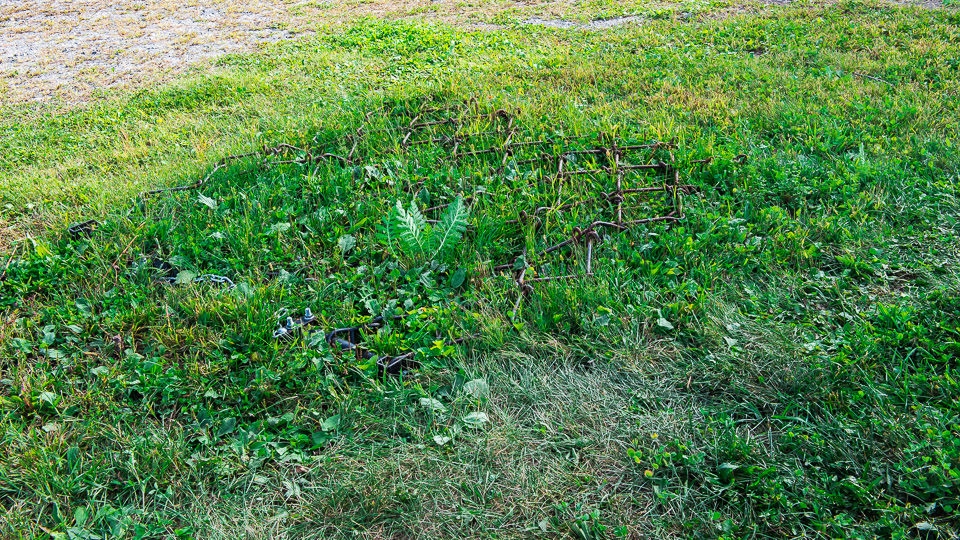
Horse Injury Prevention – An Introduction
This subject is important as it could be called financial loss prevention or pain and suffering prevention (same with disease prevention).
Injury prevention is sometimes impossible because no matter how hard you try, the horse seems to find a way to hurt themselves or each other. But there are a lot of things you can do to mitigate the obvious. The topics here cover some of these things but in essence you need to be always on the lookout for danger.
I remember watching Melissa work on a horse and as the horse backed up in the stall, something caught my eye. Small but moving fast were some bees that were disappearing into a ¼ inch (6mm) hole in the wall. That hole was exactly where the butt of this horse was heading.
Once my shirt got caught on the tip of a screw that had been placed from the other side to hold up some tack. It had penetrated slightly beyond the width of the stall wall into the adjoining stall where my shirt and the skin of the horse were getting close to.
The environment is constantly evolving. Always be looking out for these changes. Nothing remains safe, not when there are horses involved.
Use the browser back button or menu to return to the index of topics.
Horse Barn Structures – Casting Rails
A horse becomes cast when they lie down next to a wall with their legs facing away from that wall then they roll over onto their backs and continue that roll until their legs now face that wall (they roll over). Instead of having room to position their legs to get up or to even roll back, the wall now becomes a blockade (see the video). The horse is unable to rise or to roll back. They are stuck. Horsemen call this casting. Casting rails attached to the walls, like you see in the gallery, give the horse the ability to secure their hooves to the wall and push their body away. They can now get up. They are an inexpensive addition to any stall.
Horse Barn Structures – Kick Mats
Some horses like to kick when in their stalls. If behavior modification or horse relocation is not an option then adding cushioning to the direct kick to the wall becomes necessary to prevent injury to the horse. Yes they can kick until they are hurt. They can also damage the barn. Kick mats will help both.
Horse Barn Structures – Stall Wall Sandwich Boards
Stall walls made of plank boards stacked on edge inside a channel make a quick set up for stalls. They also provide an easy way to take the wall down to double the size of a stall. A sandwich board ties these boards together preventing them from being pushed apart. Let me explain how a sandwich board can save your horse’s life.
Horse Basic Care And Safety – The Cast Horse
The Cast Horse
Horse Farm Fencing – Safety
Horses don’t normally live behind fences. They are inherently dangerous for the horse although being born and raised behind one, the young horse learns quickly to respect them. Yet injury from fencing occurs every day.
There are many styles of fencing and usually the cost of the fence is proportional to the safety it brings to the farm. But that’s not always the case. Fencing that is not maintained often becomes the reason for injury.
Horse Injury Prevention – Bad Ideas Around Horses
Every now and then I see a “bad idea” with good intentions on a horse farm. Usually the idea springs from the mind wanting an easier way of doing something. However not much thought is put into the idea from the perspective of the horse.
Horse Injury Prevention – Barn Filth And Disrepair
Having filth is a sign that the owner doesn’t care about the horses in his or her custody. The environment is usually also in disrepair. This is either laziness or lack of money. Either way the horse is forced to live in it.
Horse Injury Prevention – Dangerous Things Around Horses
There are so many dangerous things I have found on horse farms. These include sharp objects, exposed electric wires and bee hives in the wall. Most of the issues come from either laziness of the barn owner or lack of money to make the repairs.
The cost of having dangerous things on the farm ranges from additional time lost in treating wounds, the added expense for a veterinary visit, the lost training time or the loss of use or death of the horse.
Horse Injury Prevention – Water Bucket Safety
Water buckets seem harmless yet they are famous for catching eyelids and removing them. Ouch! And preventable.
Top 10 Horse Barn Safety Tips – a HorseTalk™ Webcast
This is a replay of a HorseTalk™ webcast. Be sure to enroll in the next one and join Doc T live.


Responses